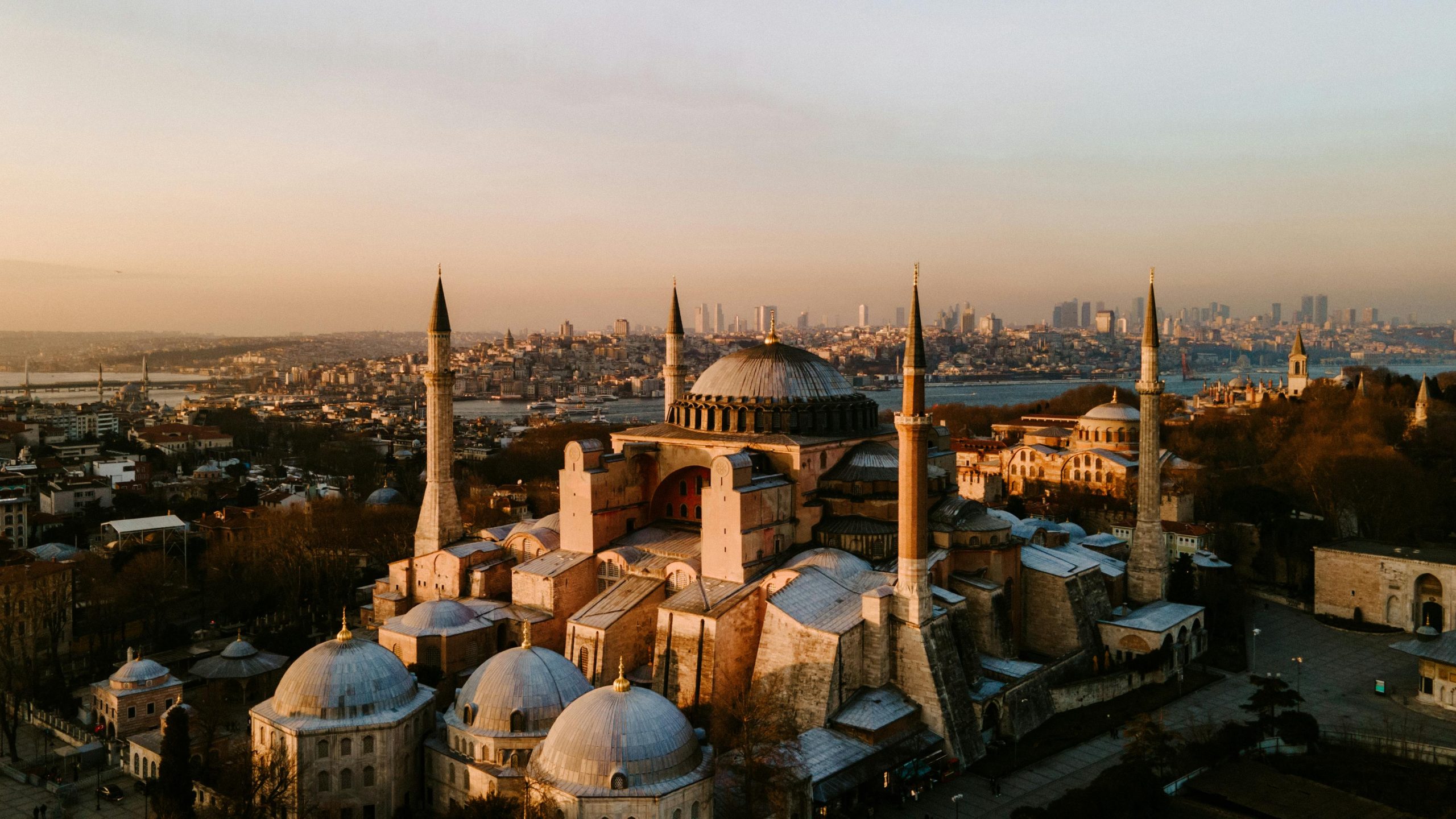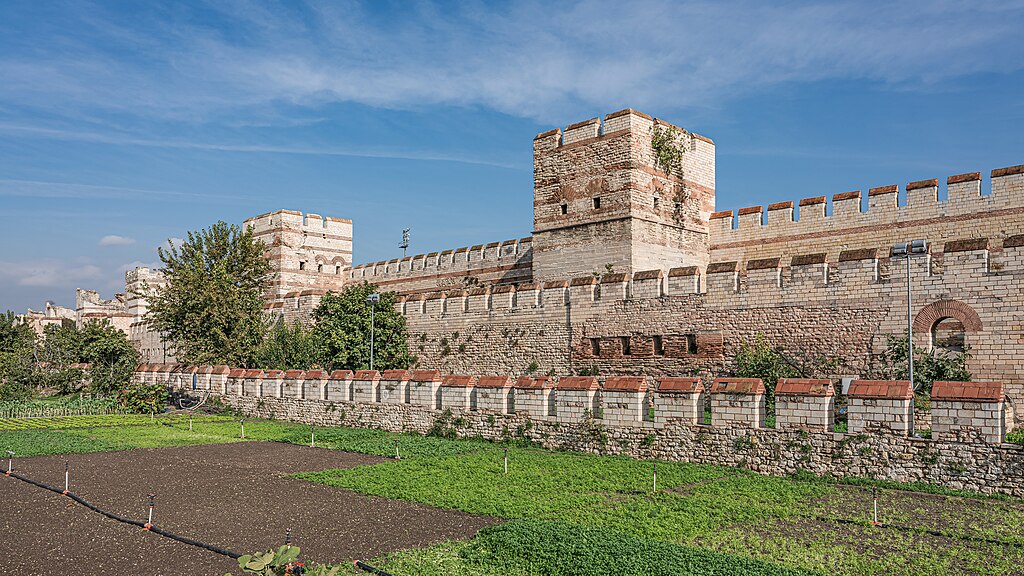Kaligaria Gate, Istanbul
City Gate in Istanbul

Hidden away in the quieter reaches of Istanbul's old city walls lies the Kaligaria Gate, once the bustling access point to the Bootmakers' Quarters of Byzantine Constantinople. This lesser-known gate is far from the grandeur of the Golden Gate or the ceremonial portals of the Theodosian Walls, but that's exactly what makes it so compelling. Here, history feels human-scaled — a place where artisans, guards, and servants passed through on their daily routines, carrying goods, gossip, and the quiet pulse of an empire at work. If you're exploring the city's northern fortifications, this spot is one of the best places to see in Istanbul to understand how ordinary life thrived alongside imperial power.
The gate lies close to the remains of the Blachernae Palace complex and the nearby Palace of the Porphyrogenitus, both reminders of Byzantium's final centuries. Walking here gives you a sense of how the capital once functioned as both fortress and city, where the hum of craft workshops mingled with the ceremonial life of emperors. Though only fragments survive, the Kaligaria Gate is a great place to visit on a walking tour of Istanbul's walls, linking together centuries of trade, craftsmanship, and defense.
History and Significance of the Kaligaria Gate
The Kaligaria Gate, whose name comes from the Greek word kaligarios meaning “bootmaker,” took its name from the bustling craft quarter that surrounded it in Byzantine times. Located near the northwestern corner of the city, close to the Blachernae Palace, it served as a secondary entrance to the imperial district. Unlike the grand ceremonial gates where emperors entered in triumph, the Kaligaria Gate was a working passageway — used by artisans, guards, and palace staff who sustained the daily life of Constantinople. Its modest design reflected its practical purpose, yet its role was vital in connecting the imperial court with the city's skilled labor force.
During the later Byzantine centuries, the Blachernae district became the favored residence of the emperors, and the Kaligaria Gate's proximity made it strategically significant. It provided controlled access between the fortified palace complex and the neighborhoods beyond the walls, allowing for discreet movement of goods and personnel. The gate thus embodied the dual nature of the city itself: opulent and ceremonial on one hand, but sustained by the tireless work of its artisans on the other. In its quiet way, the Kaligaria Gate was a symbol of the empire's endurance and organization.
After the Ottoman conquest in 1453, much of the surrounding area changed dramatically. While many of the grand gates were repaired or integrated into new urban patterns, smaller gates like Kaligaria fell into partial ruin. Today, little remains beyond traces of masonry, but its story is still written in the surviving layout of the walls. Standing near its location, one can imagine the rhythmic sound of cobblers' hammers echoing from the workshops — the same sound that once accompanied the life of a world capital.
Things to See and Do at the Kaligaria Gate
The Kaligaria Gate may not be as visually impressive as other surviving gates, but it rewards the traveler who looks closely. Explore the area where the old palace walls meet the slopes above the Golden Horn, and you'll notice fragments of the Byzantine fortifications woven into later Ottoman and modern structures. These layers of architecture tell the story of a city continually rebuilt and repurposed. Nearby, sections of the Theodosian Walls and the surviving Palace of the Porphyrogenitus help you visualize how this gate once fit into the greater urban plan.
Walk slowly through the surrounding Ayvansaray neighborhood to experience one of the top sights in Istanbul for those who seek authenticity. Here, daily life continues amid the remnants of a vanished empire — local residents chatting on doorsteps, children playing in narrow lanes, and the distant call to prayer echoing over stones once guarded by imperial soldiers. From the site of the gate, you can also follow the walls northward toward the Blachernae Palace area or south toward the more famous gates like that of St. Romanus.
Bring a good pair of shoes and a curious eye — what remains of the Kaligaria Gate is more a story than a structure, but that's its magic. The sense of continuity between the lives of Byzantine bootmakers and modern Istanbul craftsmen feels almost tangible. It's a quiet reminder that even the smallest gates once opened into worlds of immense history.
How to Get There
The Kaligaria Gate stood near the Blachernae quarter of Istanbul, within walking distance of the Palace of the Porphyrogenitus in Ayvansaray. The easiest way to reach the area is by taking a tram or bus toward Ayvansaray and walking a few minutes along the inner line of the city walls. You can also reach the district by taking a train to Sirkeci railway station https://maps.app.goo.gl/fmsyDrqLNSy2mskB8, then continuing by tram or taxi to Ayvansaray. You can use the official TCDD Taşımacılık website to check schedules, compare routes, and purchase tickets for Turkey's national and regional trains operated by TCDD. For a more streamlined experience (especially if you prefer an English interface or want to compare across countries), we recommend using Omio, which allows you to easily compare prices, schedules, and book train tickets across Turkey and the rest of Europe — all in one place. If you plan to drive, limited street parking is available near the walls, but spaces can be tight and streets narrow. If you are looking to rent a car in Turkey I recommend having a look at Discover Cars, first, as they compare prices and review multiple car rental agencies for you.
Practical Tips on Visiting the Kaligaria Gate
- Best time to visit: Early morning or late afternoon for soft light and quieter surroundings.
- Entrance fee in Euros: Free; the site is open to the public.
- Opening hours: Open access at all times, though best visited during daylight.
- Official website: None; it is part of the public city walls heritage zone.
- How long to spend: Around 20–30 minutes, longer if exploring nearby walls and palaces.
- Accessibility: Uneven paths and occasional rubble; not suitable for all visitors.
- Facilities: None on-site, but cafés and shops are nearby in Ayvansaray.
- Photography tip: Use the morning sun to capture the textures of the remaining stonework against the skyline.
- Guided tours: Occasionally included in specialized Byzantine walking tours.
- Nearby food options: Enjoy local Turkish tea houses and small eateries in the Ayvansaray area.
Is the Kaligaria Gate Worth Visiting?
Yes, especially for travelers who love uncovering the hidden corners of Istanbul's immense history. While the Kaligaria Gate is not grand or heavily restored, it offers an evocative glimpse into the daily rhythm of Byzantine life. It's an atmospheric spot that rewards imagination more than spectacle, perfect for those who prefer the quiet stories of a city to its postcard icons. Combined with a visit to the nearby Palace of the Porphyrogenitus, it completes the picture of Constantinople's final imperial age.
FAQs for Visiting
Is the Kaligaria Gate easy to find? Yes, it lies near the northern end of the city walls in Ayvansaray, close to the Palace of the Porphyrogenitus.
Can I enter the gate itself? Only fragments remain, so entry is not possible, but you can walk around the site freely.
Are there signs or markers? A few local markers indicate the area, but it's best to bring a map or GPS.
Is the area safe to explore? Yes, it's a residential neighborhood; just stay aware of traffic on small streets.
Is there public transport nearby? Yes, trams and buses stop within walking distance of the site.
Nearby Attractions to the Kaligaria Gate
- Palace of the Porphyrogenitus – the last standing Byzantine palace, beautifully restored.
- Church of St. Mary of Blachernae – once one of Constantinople's most sacred shrines.
- Chora Church (Kariye Mosque) – world-renowned for its mosaics and frescoes.
- Theodosian Walls – the city's grand defensive line, still impressive today.
- Fener and Balat Districts – colorful historic neighborhoods filled with old houses and cafes.
The Kaligaria Gate appears in our Complete Guide to Visiting Istanbul!
This website uses affiliate links which may earn a commission at no additional cost to you!
Visiting Kaligaria Gate
Nearby Attractions
- Palace of Blachernae (0.3) km
Palace and Roman Site in Istanbul - Palace of the Porphyrogenitus (0.3) km
Palace in Istanbul - Chora Church (0.6) km
Church in Istanbul - Gate of Charisius (0.6) km
City Gate in Istanbul - Fifth Military Gate (1.7) km
City Gate in Istanbul - Gate of Saint Romanus (2.0) km
City Gate in Istanbul - Panorama 1453 History Museum (2.6) km
Museum in Istanbul - Gate of Rhesios (2.9) km
City Gate in Istanbul - Suleymaniye Mosque (3.1) km
Mosque in Istanbul - Galata Tower (3.1) km
Tower in Istanbul


